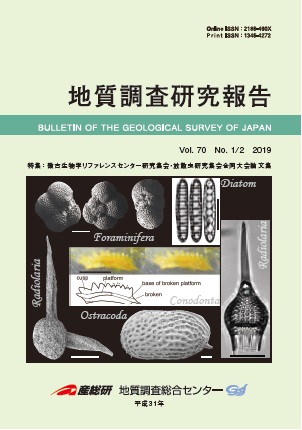Volume 70, Issue 1-2
Displaying 1-17 of 17 articles from this issue
- |<
- <
- 1
- >
- >|
-
Article type: Preface
2019 Volume 70 Issue 1-2 Pages 1-4
Published: March 29, 2019
Released on J-STAGE: April 12, 2019
Download PDF (506K)
Article
-
2019 Volume 70 Issue 1-2 Pages 5-16
Published: March 29, 2019
Released on J-STAGE: April 12, 2019
Download PDF (2408K) -
2019 Volume 70 Issue 1-2 Pages 17-41
Published: March 29, 2019
Released on J-STAGE: April 12, 2019
Download PDF (10466K) -
Article type: research-article
2019 Volume 70 Issue 1-2 Pages 43-89
Published: March 29, 2019
Released on J-STAGE: April 12, 2019
Download PDF (68001K) -
Article type: research-article
2019 Volume 70 Issue 1-2 Pages 91-99
Published: March 29, 2019
Released on J-STAGE: April 12, 2019
Download PDF (1371K) -
Article type: research-article
2019 Volume 70 Issue 1-2 Pages 101-108
Published: March 29, 2019
Released on J-STAGE: April 12, 2019
Download PDF (6002K)
Report
-
Article type: Report
2019 Volume 70 Issue 1-2 Pages 109-115
Published: March 29, 2019
Released on J-STAGE: April 12, 2019
Download PDF (12133K) -
Article type: Report
2019 Volume 70 Issue 1-2 Pages 117-123
Published: March 29, 2019
Released on J-STAGE: April 12, 2019
Download PDF (4781K)
Review
-
Article type: review-article
2019 Volume 70 Issue 1-2 Pages 125-136
Published: March 29, 2019
Released on J-STAGE: April 12, 2019
Download PDF (1737K)
Notes and Comments
-
Article type: Note and Comment
2019 Volume 70 Issue 1-2 Pages 137-161
Published: March 29, 2019
Released on J-STAGE: April 12, 2019
Download PDF (42618K) -
Article type: Notes and Comments
2019 Volume 70 Issue 1-2 Pages 163-194
Published: March 29, 2019
Released on J-STAGE: April 12, 2019
Download PDF (42933K) -
Article type: Notes and Comments
2019 Volume 70 Issue 1-2 Pages 195-209
Published: March 29, 2019
Released on J-STAGE: April 12, 2019
Download PDF (12316K) -
Article type: Note and Comment
2019 Volume 70 Issue 1-2 Pages 211-224
Published: March 29, 2019
Released on J-STAGE: April 12, 2019
Download PDF (25881K) -
Article type: Note and Comments
2019 Volume 70 Issue 1-2 Pages 225-247
Published: March 29, 2019
Released on J-STAGE: April 12, 2019
Download PDF (21459K)
-
Article type: other
2019 Volume 70 Issue 1-2 Pages 249-260
Published: March 29, 2019
Released on J-STAGE: April 12, 2019
Download PDF (601K) -
2019 Volume 70 Issue 1-2 Pages 261-265
Published: March 29, 2019
Released on J-STAGE: April 12, 2019
Download PDF (450K) -
2019 Volume 70 Issue 1-2 Pages 267-272
Published: March 29, 2019
Released on J-STAGE: April 12, 2019
Download PDF (716K)
- |<
- <
- 1
- >
- >|
